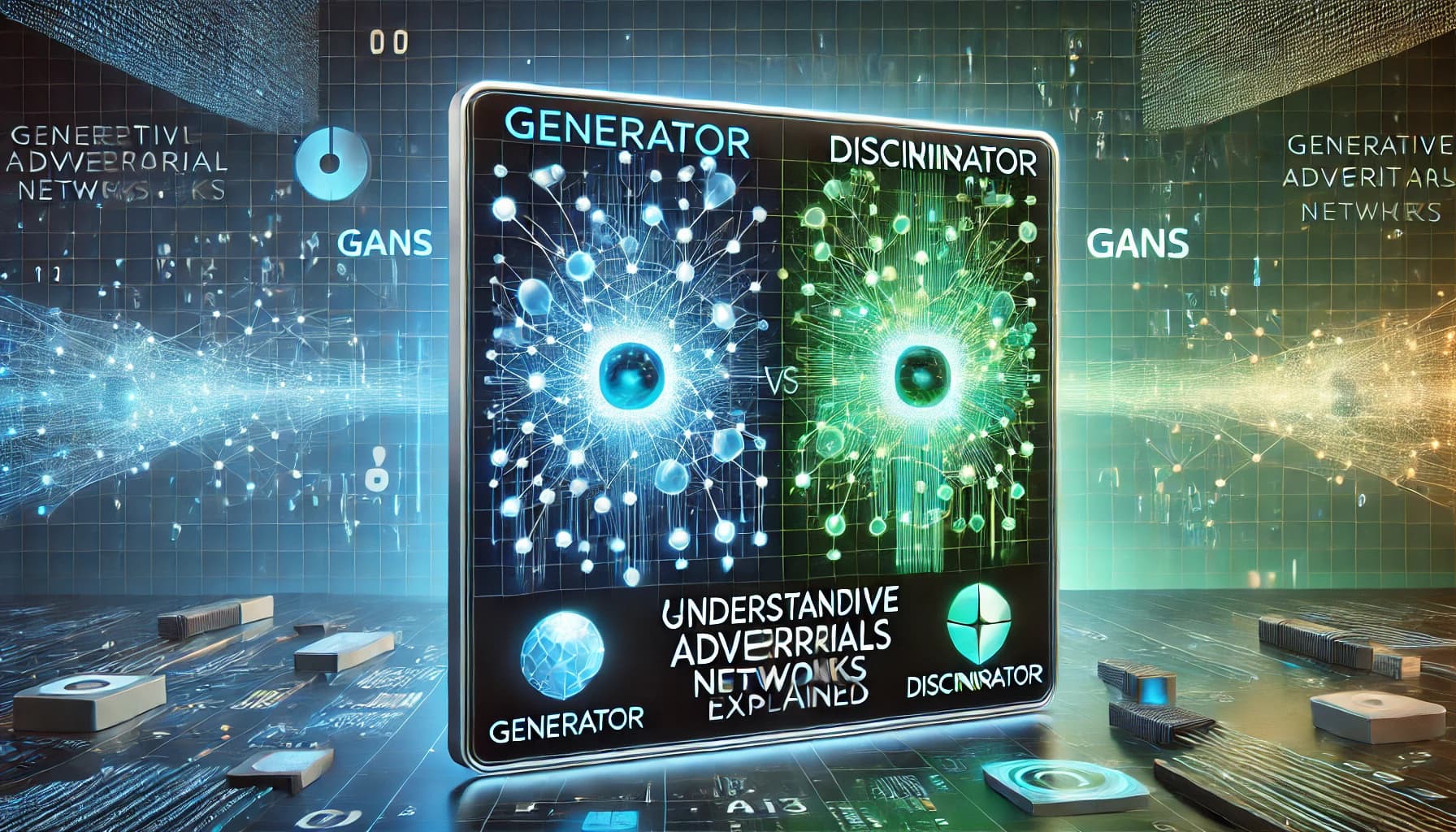Understanding Generative Adversarial Networks (GANs): A Student’s Guide
Introduction
Generative Adversarial Networks (GANs) are one of the most exciting innovations in machine learning, offering the ability to generate new data that mimics real-world data. From creating realistic images to enhancing datasets for training, GANs have found applications in numerous fields, including computer vision, gaming, and healthcare.
In this article, we’ll dive deep into what GANs are, how they work, and explore practical examples to solidify your understanding. If you’re a student looking to grasp this complex yet fascinating topic, this guide is for you.
What is a Generative Adversarial Network?
A Generative Adversarial Network (GAN) is a machine learning framework composed of two neural networks:
- Generator: Creates fake data similar to the real dataset.
- Discriminator: Distinguishes between real and fake data.
These two networks compete in a zero-sum game, where the generator improves by trying to fool the discriminator, and the discriminator improves by becoming better at detecting fakes.
Example in Action:
Imagine you’re training a GAN to generate realistic cat images. Here’s how it works: - The **generator** starts by creating random noise and tries to generate images resembling cats. - The **discriminator** evaluates these images against real cat images and provides feedback. - Over time, the generator learns to create images so realistic that even the discriminator struggles to differentiate.How Does a GAN Work?
The GAN framework involves the following steps:
Step 1: Input Noise to Generator
The generator takes random noise as input and produces a data sample, like an image or text.Step 2: Discriminator Evaluation
The discriminator evaluates the generator’s output against real data, classifying it as real or fake.Step 3: Loss Calculation
The discriminator and generator each have their own loss functions: - **Discriminator Loss**: Measures how well it differentiates real vs. fake data. - **Generator Loss**: Measures how well it fools the discriminator.Step 4: Backpropagation and Updates
Both networks update their weights using gradient descent: - The generator improves by minimizing the generator loss. - The discriminator improves by minimizing the discriminator loss.This process continues in a loop until the generator produces data indistinguishable from real samples.
Practical Examples of GANs
#Image Generation
GANs like StyleGAN can create ultra-realistic images of human faces that don’t exist. These images are often used in:
- Creating avatars for virtual environments.
- Generating data for video game characters.
Example:
- Input: Random noise. - Output: A high-resolution, realistic human face.2. Data Augmentation
GANs are used to generate synthetic datasets, especially when real data is limited or expensive to obtain. For instance: - Medical imaging: Generating rare disease data to train diagnostic models. - Autonomous driving: Simulating driving scenarios to test self-driving cars.Example:
In medical imaging, GANs can produce MRI scans that resemble those of patients with rare conditions, improving model training accuracy.3. Style Transfer
GANs can blend artistic styles with photos, such as transforming a picture into a Van Gogh-style painting. This technique is popular in digital art and graphic design.Example:
- Input: A photo of a city skyline. - Output: The same photo in the style of a famous painting like *Starry Night*.4. Video Game Asset Generation
GANs generate textures, landscapes, and objects for video games, reducing development costs and time.Advantages of GANs
Realistic Data Generation:
GANs excel at creating data that closely resembles real-world data, useful in simulations and augmentations.Wide Applications:
From healthcare to entertainment, GANs are versatile and adaptable.Improved Model Performance:
By generating diverse training data, GANs help improve the robustness of machine learning models.
Challenges with GANs
Training Instability:
The adversarial nature of GANs can lead to unstable training where the generator or discriminator outperforms the other.Mode Collapse:
Sometimes, the generator produces limited variations, failing to capture the full diversity of the data.Computational Cost:
GANs require significant computational resources, especially for high-resolution outputs.
Getting Started with GANs: A Simple Code Example
Here’s a basic implementation of a GAN using Python and TensorFlow:
import tensorflow as tf
from tensorflow.keras import layers
<h1 id="generator-model">Generator model</h1>
def build_generator():
model = tf.keras.Sequential([
layers.Dense(256, activation='relu', input_dim=100),
layers.Dense(512, activation='relu'),
layers.Dense(784, activation='sigmoid')
])
return model
<h1 id="discriminator-model">Discriminator model</h1>
def build_discriminator():
model = tf.keras.Sequential([
layers.Dense(512, activation='relu', input_dim=784),
layers.Dense(256, activation='relu'),
layers.Dense(1, activation='sigmoid')
])
return model
<h1 id="build-and-compile-models">Build and compile models</h1>
generator = build_generator()
discriminator = build_discriminator()
discriminator.compile(optimizer='adam', loss='binary_crossentropy', metrics=['accuracy'])
<h1 id="combine-models-into-a-gan">Combine models into a GAN</h1>
discriminator.trainable = False
gan_input = layers.Input(shape=(100,))
fake_data = generator(gan_input)
gan_output = discriminator(fake_data)
gan = tf.keras.Model(gan_input, gan_output)
gan.compile(optimizer='adam', loss='binary_crossentropy')
<h1 id="training-loop">Training loop</h1>
import numpy as np
for epoch in range(10000):
# Generate random noise
noise = np.random.normal(0, 1, (128, 100))
# Generate fake data
generated_data = generator.predict(noise)
# Train discriminator
real_data = np.random.rand(128, 784) # Placeholder for real data
labels = np.concatenate([np.ones((128, 1)), np.zeros((128, 1))])
data = np.concatenate([real_data, generated_data])
discriminator.train_on_batch(data, labels)
# Train generator via GAN
noise = np.random.normal(0, 1, (128, 100))
misleading_labels = np.ones((128, 1))
gan.train_on_batch(noise, misleading_labels)
Conclusion
Generative Adversarial Networks are a powerful and versatile tool in machine learning, capable of creating realistic data and solving complex problems. While they have challenges like training instability, their applications in fields like healthcare, gaming, and art are reshaping industries.
As a student, exploring GANs through practical coding exercises can help you understand their mechanics and prepare for future innovations in AI.







